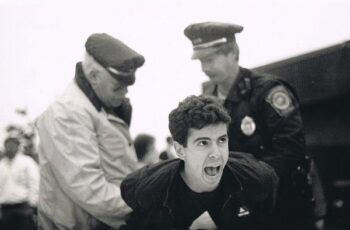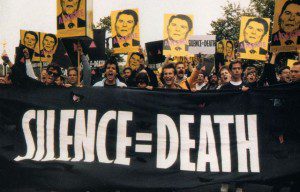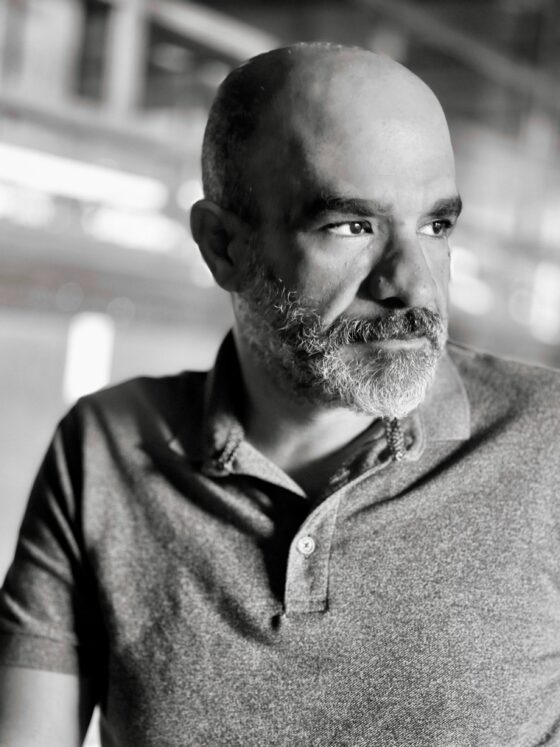
The response to the AIDS epidemic that ripped through the gay community starting in the early years of the Reagan administration can be best characterized by how most health and social issues are dealt with in contemporary politics today, with a marked lack of empathy. It’s how the system works: politicize an issue that has a clear solution in loaded, polarizing terms that all but guarantees its solution will not be met. Take what we’ve got at the top of the news now, a presidential candidate who believes the unemployed are lazy, disability recipients are moochers, welfare beneficiaries are self-victimized, and other issues of the 47%. In the 1980s you could add to that list, gays are immoral and AIDS was their retribution. That’s how you spin it—you characterize those in need as bad.
It’s exactly the government and public health officials’ response to the AIDS medical outbreak that would claim 20,000 Americans by the spring of 1987, when president Reagan said, “when it comes to AIDS, don’t medicine and morality teach the same lessons?” This thinking created a climate of cruel certainty for the gay community. It was an issue thwarted by ignorance, hate, and corporate bottom lines. This is the tension encapsulated in the film How To Survive A Plague, a vital document of AIDS activism by ACT UP, the group that organized in 1987 in downtown New York City, whose protests and awareness-raising triggered change that ultimately served as the lifeline for millions.
The film, constructed almost entirely of home movie footage that director David France gathered from 31 credited videographers on the scene, is interrupted by a green, bleeping digital counter which tallies the number of deaths claimed by AIDS worldwide. Next to the counter is the year. As the years ring on so does the death toll. You’re quick to realize the grim inevitability that awaits you when you’re only into the first third of the film and the numbers are already incomprehensibly big. This interstitial device would be sensationalistic if it wasn’t true. The tinny granules of VHS imagery tell a parallel story with a weight that both devastates and inspires. As much as this movie transports you to the very darkest days of the AIDS epidemic—when the sick were ostracized, patients were denied treatment at hospitals, and the dead were sometimes marched through the street in protest of their superfluous deaths—it is also a story that expresses the thrill of righteous organization.
 Peter Staley, the face of ACT UP, led them in asking, Where were the drugs to help the dying? And when the first drug, and a subsequently ineffectual one, AZT, appeared on the market in 1987 at a staggering $10,000 per year, they asked, Where are the affordable drugs? For ACT UP and the gay community, everything was at stake—their lives were at stake. What incited them to action, with their ubiquitous “SILENCE = DEATH” stickers plastered across the city, was the sober realization that when no one will advocate for you, you must advocate for yourself. Mr. France structured the film to mirror his own journalistic career that was inexorably linked to the AIDS epidemic when in 1981 the first man died of the disease. Reporting on the epidemic early, he watched neighbors and his own boyfriend fall ill and die. By all accounts this is a personal story, as well as it is for everyone behind the cameras who took it incumbent upon themselves to demand answers to questions that public health and political figures simply would not acknowledge.
Peter Staley, the face of ACT UP, led them in asking, Where were the drugs to help the dying? And when the first drug, and a subsequently ineffectual one, AZT, appeared on the market in 1987 at a staggering $10,000 per year, they asked, Where are the affordable drugs? For ACT UP and the gay community, everything was at stake—their lives were at stake. What incited them to action, with their ubiquitous “SILENCE = DEATH” stickers plastered across the city, was the sober realization that when no one will advocate for you, you must advocate for yourself. Mr. France structured the film to mirror his own journalistic career that was inexorably linked to the AIDS epidemic when in 1981 the first man died of the disease. Reporting on the epidemic early, he watched neighbors and his own boyfriend fall ill and die. By all accounts this is a personal story, as well as it is for everyone behind the cameras who took it incumbent upon themselves to demand answers to questions that public health and political figures simply would not acknowledge.
In a particularly poignant though minor moment, lawyer and gay rights advocate, David Barr, says to the ACT UP support group, “It sounds corny, but I like being alive.” It’s a small line in an equally small scene in the narrative. But in fact, it’s the bareness of this expression that gets to the emotional core of the film. The bitter shroud of politics threatens that spirit at any given time, but their leadership prevents it. Peter Staley was a former trader on Wall Street before he, too, was infected with HIV. Slight and lean in stature, he has quiet facial features that defy a provocative nature. When conservative Pat Buchannan had him as a guest on his political talk show, “Crossfire,” to discuss the impact of AIDS, Buchanan (a softy compared to the liberal politician across the table biting at Staley with disdain) is outmatched by his fluency; he fumbles for his words and eventually just cuts to commercial. Dumbfounded responses like this became the norm for those he would go up against. Mark Harrington was a soft-spoken guy, thin and unassuming like Staley, a chain smoker, and wickedly smart. He was responsible for the first Treatment & Data Committee (T&D) meeting where he presented the definitions of medical terms ACT UP needed to know to argue about the disease effectively with pharmaceutical companies. It was the basis of a self-education initiative that eventually brought effective drugs to market. In 1996, the year the most advanced drug was introduced, the death rate for AIDS in New York City dropped by 50%.
What’s remarkable about ACT UP that distinguishes it from other activist organizations is the fact that it remains relatively anonymous while having effected superlative change. The PBS series “Frontline” produced two essential documentaries on the history and specter of AIDS around the world and in black America, in 2006 and 2012, respectively. They are crucial textbook histories that reiterate the same immoral characterizations Americans had about the disease in the ‘80s and ‘90s as people do—predominantly in Africa—around the world today. How To Survive A Plague takes that history and makes it personal. Their cause is far from over. Worldwide, four people die every minute because they can’t afford AIDS medication. There’s simplicity to the urgency of AIDS activism. Meet Ray Navarro, an early ACT UP member who was infected. He documented his dying days on camera, with his mother at his side. His eyes peek up into the lens, and before it fades out he says, “What the hell—life is worth living, isn’t it?”




